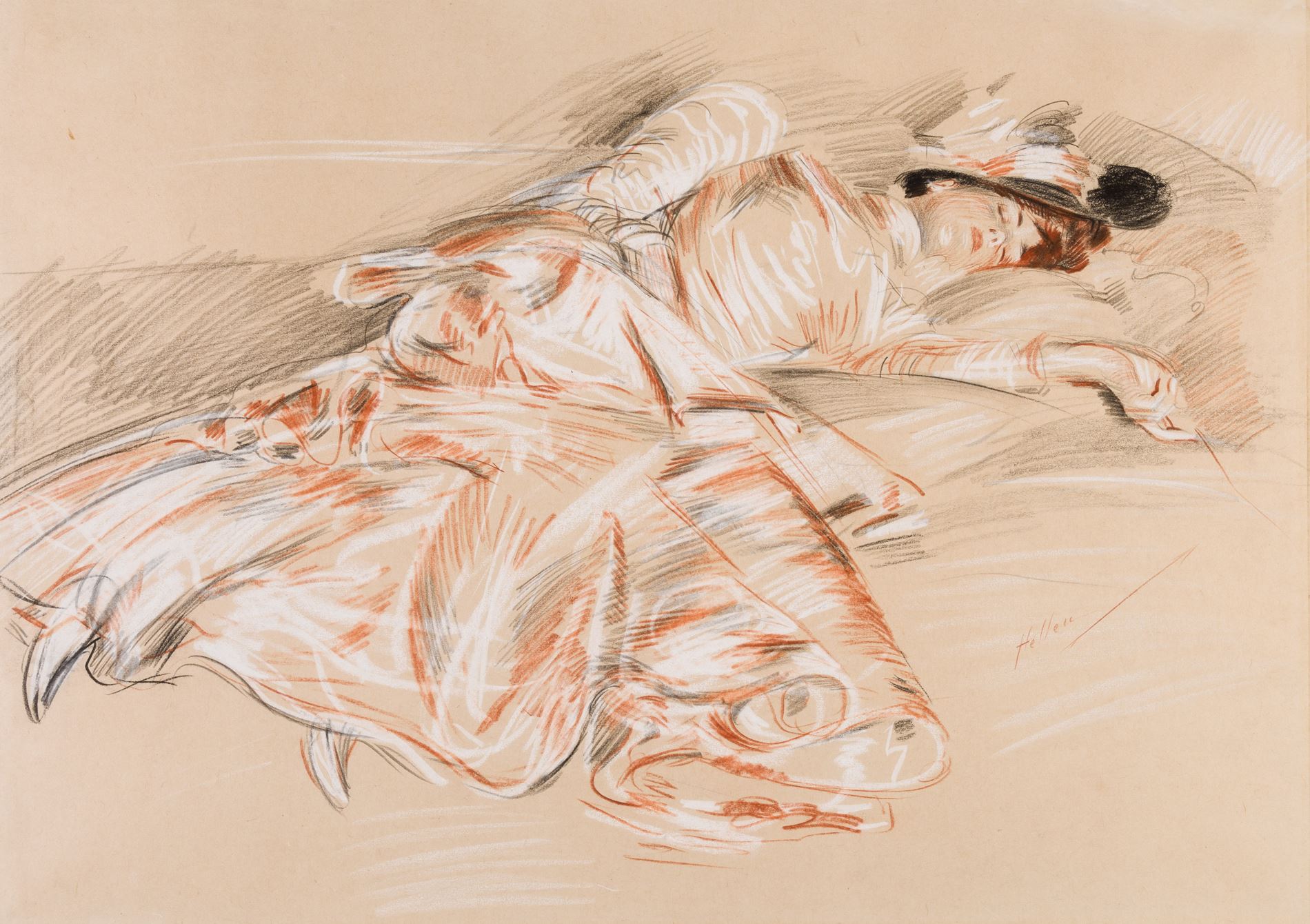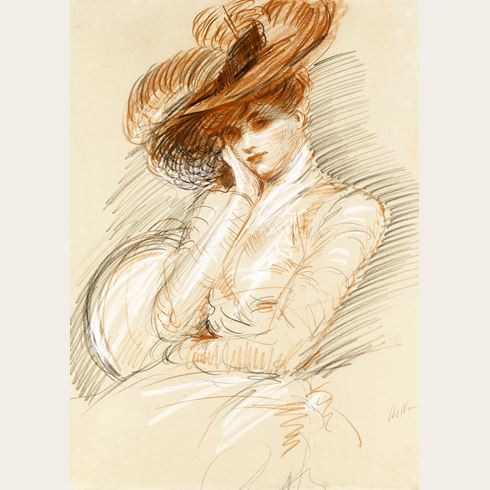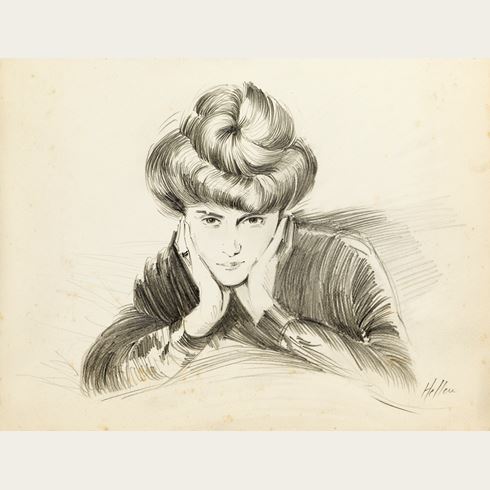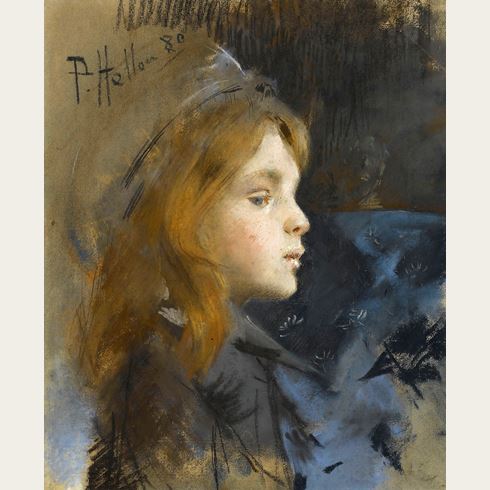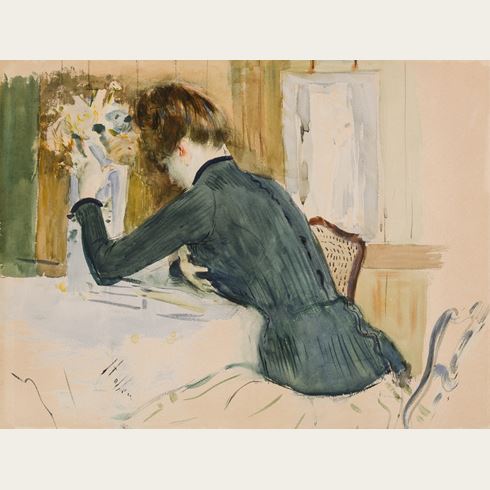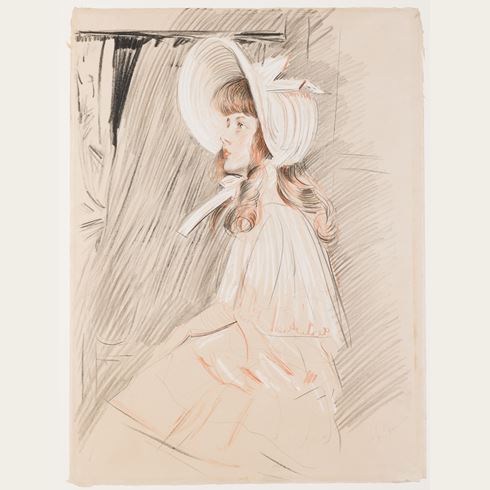Paul César HELLEU
(Vannes 1859 - Paris 1927)
A Young Woman Asleep
Signed Helleu in red chalk at the lower right centre.
480 x 670 mm.
The intimate subject of the present sheet would suggest that the model was Alice Helleu, whom the artist often depicted deep in thought, reading a book or asleep in a chair; she is also occasionally shown with one of her young children. Helleu did, however, also occasionally portray other women sleeping, such as in a large drypoint etching of the actress Madeleine Carlier asleep on a couch, executed around 1900, and a drawing of The Duchess of Marlborough Asleep on a Settee with her Dog of the same date, today in the Musée Bonnat-Helleu in Bayonne.
A number of large and stylistically comparable 'trois crayons' drawings of a pensive Alice Helleu are today in private collections; these all have the appearance of finished works of art, rather than preparatory studies or sketches. As one recent scholar has written, ‘Many of Helleu’s best and most delightful productions are his portraits of his wife...These quick impressions, drawings or dry-points, are extraordinarily effective and have a much subtler appeal than the long series of commissioned portraits of fashionable ladies and celebrated beauties that helped bring him fame and fortune.’
The 1890s found Helleu and his young wife Alice popular figures in polite society in both France and England, with the artist receiving numerous portrait commissions and enjoying considerable financial success. He was a gifted portraitist, and was highly regarded for his portraits of the elegant women of the beau monde of Paris, London and New York. His subjects included the Comtesse Greffulhe, Queen Alexandra and Consuelo Vanderbilt, the Duchess of Marlborough. These works were greatly admired by his contemporaries; as Edmond de Goncourt noted in a letter to the artist, written in February 1895, ‘Your work has for its inspiration that dear model who fills all your compositions with her dainty elegance. It is sort of a monograph on Woman, in all the infinite varied attitudes of her intimate home life.’
Encouraged by his friend Sargent, Helleu began travelling to America in 1902, where his reputation had preceded him, and where he achieved much success as a portrait painter (despite apparently only knowing one word of English, namely the word ‘charming’). It was in 1912, on his second visit to New York, that he completed his most public work, the vaulted ceiling of the main hall of Grand Central Station, painted with the signs of the zodiac and the stars of the Milky Way. Helleu’s later reputation, however, has rested primarily on his etched work, executed in the medium of drypoint. First introduced to the etching medium by James Tissot, Helleu produced a large number of portraits of fashionable women in this manner, for which he charged up to 1,200 francs. The popularity of these prints has, however, tended to overshadow his less numerous oil paintings and pastels. In 1931, four years after Helleu’s death, a retrospective exhibition of his work was held at the Galerie Charpentier in Paris.
Provenance
Private collection, UK
Anonymous sale, London, Sotheby’s, 22 May 2014, lot 48
Private collection, France.

